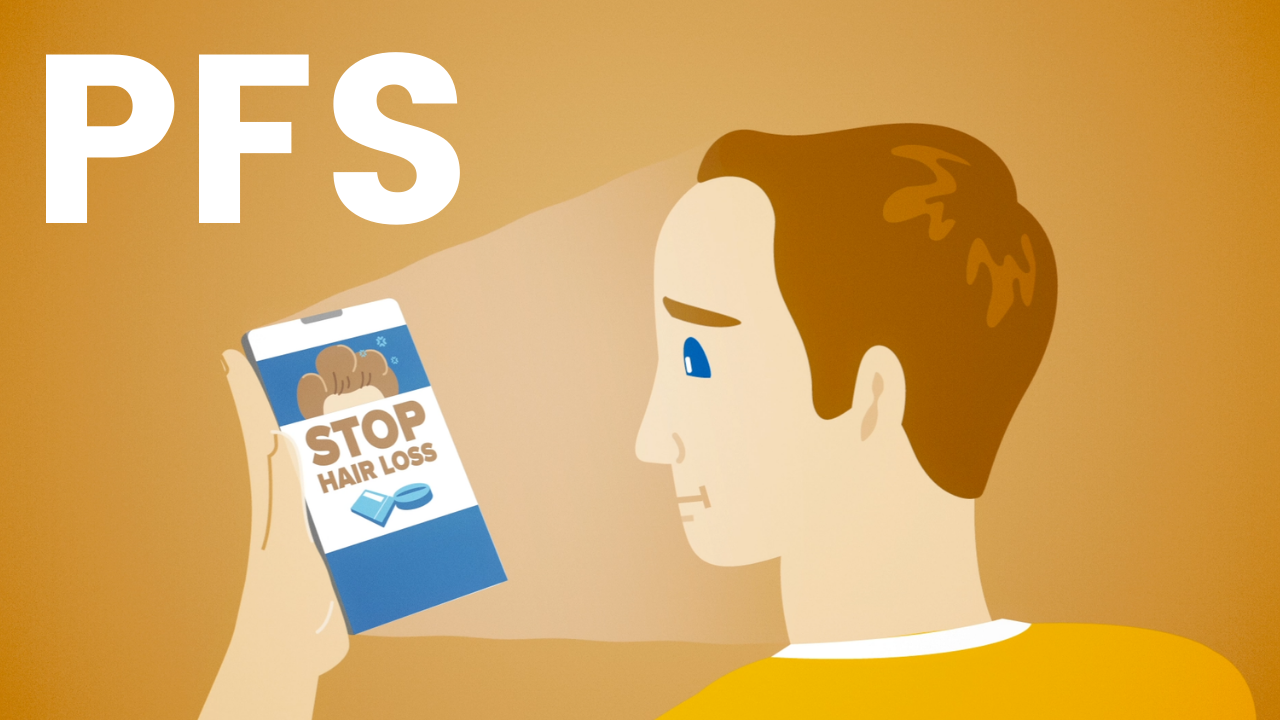About Post-Finasteride Syndrome
What is Post-Finasteride Syndrome?
Post-Finasteride Syndrome refers to serious and permanent physical, neurological, and sexual symptoms that occur in some men after stopping Finasteride or 5-alpha reductase inhibitors
Post-Finasteride Syndrome has a devastating impact on patients and their loved ones. A serious clinical problem with no effective treatment, it frequently causes disability, isolation, and suicide.
Patients can experience differing symptoms which vary widely in severity. Severity does not correlate with duration of use.
Why a subset of men develop Post-Finasteride Syndrome after as little as one dose of Finasteride is unknown. The percentage of men experiencing the condition is unclear.
Remarkably, symptoms progress or onset after stopping the drug in the majority of cases.
“There are no known effective and available treatments, and the syndrome is indiscriminate in that it develops in men without any prior medical or psychiatric history, pre-existing sexual dysfunction, or any other apparent risk factors.”
“The medical community has an obligation not to turn a blind eye on this rare yet debilitating condition in young men.”
— Prof. A.M. Traish, The Post-finasteride Syndrome: Clinical Manifestation of Drug-Induced Epigenetics Due to Endocrine Disruption, Medical Comorbidities, 2018
“The occurrence of persistent adverse sexual, physical, neurological, and psychiatric side effects after 5α-reductase inhibitor is well supported by the existing data.”
— Than et al., Post-finasteride Syndrome: A Review of Current Literature, Male Sexual Dysfunction and Disorders, 2018
“The present study supports the conclusion that 5ARI use may predispose to persistent sexual, genitourinary, psychocognitive, and antiandrogenic changes even after 5ARI therapy is discontinued.”
— Khera et al., Penile vascular abnormalities in young men with persistent side effects after finasteride use for the treatment of androgenic alopecia, Translational Andrology and Urology, 2020
Common symptoms of Post-Finasteride Syndrome
Physical
Dry eyes and skin
Head pressure
Frequent urination
Autonomic dysfunction
Muscle twitches
Muscle wasting
Weakness and fatigue
Bone pain
Osteopenia
Tooth and gum problems
Metabolic changes
Skin pigmentation changes
Thinned skin
Prominent veins
Anhidrosis
Sleep apnoea (obstructive/central)
Digestive problems
Sexual
Penile atrophy and tissue changes
Perineal muscle atrophy
Genital pain
Genital numbness
Watery ejaculate
Reduced ejaculate volume
Testicular atrophy
Loss of libido and sexual desire
Erectile dysfunction
Loss of spontaneous erections
Premature ejaculation
Increased refractory period
Pleasureless orgasm
Post-orgasm asthenia
Neurological
Anhedonia
Anxiety and panic attacks
Insomnia
Derealisation
Cognitive impairment and "brain fog"
Memory impairment
Vision impairment
Tinnitus
Symptoms of seizure
Suicidality
Unpredictable, untreatable and unrecognised
Finasteride represents an unrecognised public health risk as online marketing of appointment-free prescriptions increases, and more men experience a serious and permanent syndrome with no effective treatment or cure.
Patient-focused molecular diagnostics are an urgent necessity to understand the pathology of Post-Finasteride Syndrome and enable novel treatments for the thousands of patients suffering.
Clinical education is necessary to end misdiagnosis, aid patient management and ensure a genuinely informed consent before clinicians prescribe Finasteride or 5alpha reductase inhibitors to young men.
The most important patient-focused study on Post-Finasteride Syndrome to date revealed persistent overexpression of the androgen receptor and widespread and significant deregulation of gene expressions relevant to the broad symptoms experienced by patients.
Prior studies have identified penile vascular abnormalities, alterations in the levels of neuroactive steroids, and neuropathy of the pudendal nerve.
“A group of Italian researchers gave finasteride to rats and noticed that the number of androgen receptors in their brains went up. Moreover, the effects persisted long after the drug had been discontinued… [T]hey then called in men with PFS, took skin from the penis and found that the density of androgen receptors in men with PFS was about twice that of those without. Now, remember the idea of the testosterone bell curve and damping effects (little testosterone, little growth, more testosterone, more growth, even more testosterone, reduced growth)? I think this is what we are seeing here. With a greater concentration of receptors, the organ becomes more sensitive to testosterone and at a certain point, paradoxically, that sensitivity may shut down.”
— Prof. Charles J. Ryan, M.D., Director, Division of Hematology, Oncology and Transplantation, University of Minnesota, The Virility Paradox (2018).




